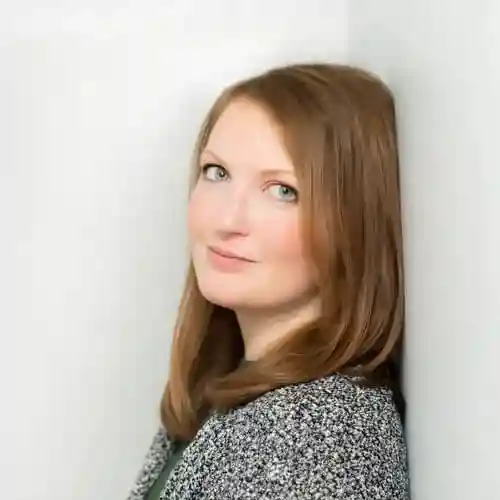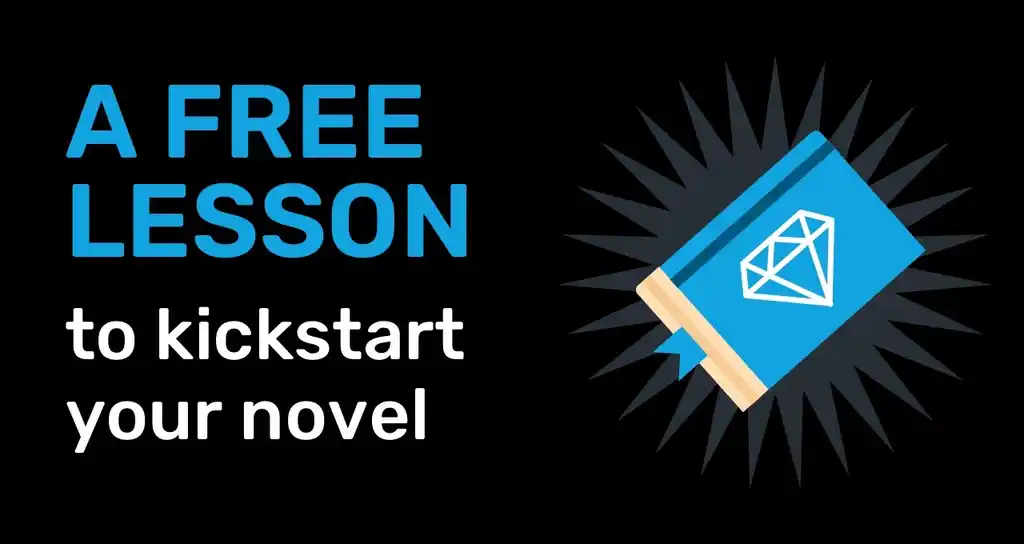This transcript has been edited for clarity and brevity.
CHRIS SMITH: Today's topic is turning your writing resolutions into results.
Today is January the 10th. Maybe about ten days ago, you set an intention to write a resolution. Maybe you set other resolutions as well, and that's great. But often resolutions of all different types can come to a stop quickly. So we're going to give you some tips and strategies to help you maintain your writing resolutions, achieve your goals, and give you success in 2024.
So, in terms of format, this is really just going to be a workshop with several exercises for you to do. There will also be a Q&A session at the end.
In terms of what we are going to cover today, we're going to start by dreaming big. This is all about motivation. It's all about helping you to think through what your big writing goal is for 2024.
And then, after that, we're going to start narrowing things down. We're going to start looking at being more specific, looking at output goals, practice goals, and what gets in the way of those goals.
At the end, we're going to help you build a habit that lasts. We’ll look at the reality of your goal, creating that goal, and embedding that goal to make it habitual.
Writing Goal: Starting to Dream Big
BEC EVANS: This is an opportunity to start dreaming big. You should tap into your imagination which is called visualizing. It might feel like wizardry at the moment, but there's some great neuroscience behind how our brains handle these dreams and goals. It's a great starting point for thinking about what you want to achieve with your writing.
Exercise 1: Dream big
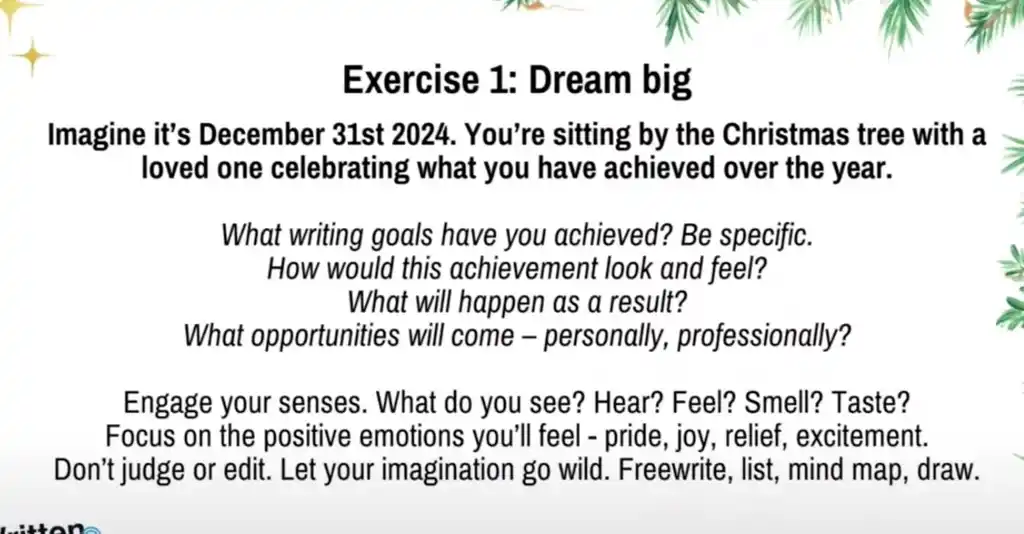
Our first exercise is all about time travel. I want you to go to the end of 2024 and imagine that it is Christmas and you might be sitting by the Christmas tree with a loved one, celebrating what you've achieved over the year.
Think about the specific writing goals that you have achieved. Explore what this achievement looks and feels like, what would happen as a result of achieving your goals, and what opportunities would come. Think as widely as you can, including both personal and professional outcomes. Treat this like a writing exercise.
Indeed, being specific about the time and place can be helpful. For instance, sitting under the Christmas tree and writing about what you see, hear, feel, smell, and taste. Focus on positive emotions such as pride, joy, relief, and excitement.
It's really important that you don't restrict your imagination. Write your thoughts as a list, a mind map, or any way you would like. A special moment to imagine is the moment where you finish your novel and it’s being printed. What would those pages look like? How would they feel? Would they still be hot with the ink? Would you be able to smell that? This is a tangible way of putting your big dreams within a visualization exercise.
A great tip is free writing which can help your imagination go wild and when you're stuck. Some people like to set a timer, but this isn’t necessary. The only rule is that you write without interruption. This means don't stop to read back. Don't check your spelling, grammar, or punctuation. This is about getting your ideas out of your head and onto the page so write until you have nothing left to say.
Focusing on Concrete Goals
CHRIS: In theory, goals are very simple. They give you something to aim for. The difficulty arises when writers build goals that are too vague in nature which can cause resolutions to falter, and fail. This section is all about setting some form of output goal. While goals need not be set in stone, research indicates that having a set goal makes it more likely that you will achieve that outcome.
Exercise 2: Getting specific
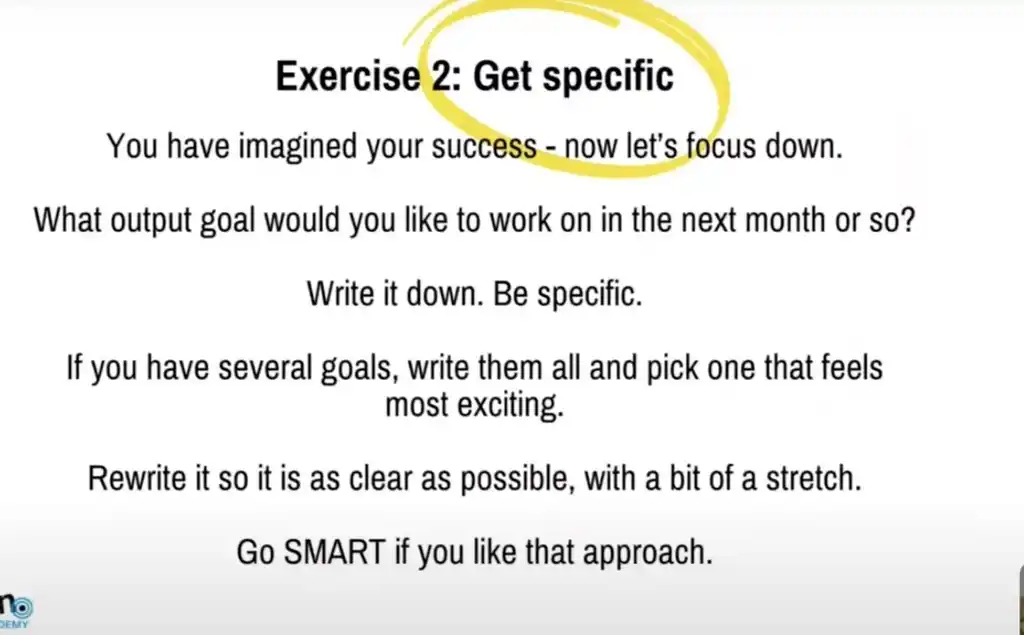
After having dreamt big, it’s now time to refine your focus. When we talk about an output goal, we're referring to milestones, chapters, sections, and word counts – tangible achievements you aim to accomplish. Take a moment to write down your goal, ensuring it's as precise as possible. Consider the next 30 days or a slightly extended timeframe. What realistic accomplishment can you target during this period? It may be challenging but take your time to decide which path to pursue.
‘Goldilocks’ goal setting is a method to consider. This involves not setting a goal that’s too adventurous or one that doesn't give you enough of a challenge.
SMART is another method. It stands for specific, measurable, achievable, relevant, and time-bound.
It’s important to consider the output goal that you could focus on for the next month.
BEC: An example of an output goal is writing 10,000 words of your novel by the end of the month.
CHRIS: A method to consider is brainstorming which is useful to use in all areas of writing and can help you to get unstuck. If you're writing a long book there could be so many sub-goals within larger goals. Then try to pick the one that most excites you. You can always change that goal, but try to pick something smaller to start with.
From Imagining Goals to Taking Action
BEC: Returning to thinking about your writing goals, what was it like to imagine achieving them? Did you feel excited? Did you feel nervous? Did it give you a sense of satisfaction?
Furthermore, achieving goals has the physiological effect of slowing down our heart rate and reducing our blood pressure. The brain can't always tell the difference between a goal that is imagined and one that exists, according to Professor Gabrielle Otingham. She has stated that positive thinking is great for exploring possibilities about the future and is good for your mood.
However, when it comes to attaining your desired future, then it's a real detriment. Instead, you need action to change your life. Positive daydreams about the future must always be complemented with a sound sense of reality.
Exercise 3: Getting real
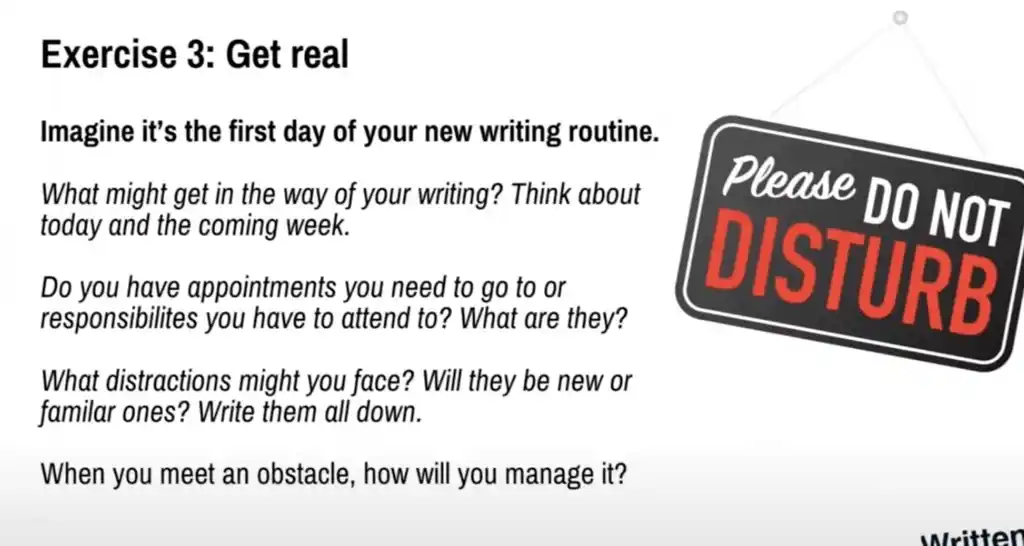
After imagining goals, the next step is translating them into reality. We've progressed from considering the end of the year to the end of the month to your next writing session. Think about what's going to get in the way of your writing. Do you have any appointments you need to attend or responsibilities you have to prioritize? What distractions might you face? Is it:
- email notifications?
- your phone ringing?
- noise in the house (if you work from home)?
- other people in a shared office space?
Ultimately, you should identify your obstacles and come up with a plan to tackle them.
How to Manage Your Obstacles
CHRIS: Some obstacles are easier to manage than others. Nevertheless, noting down and noticing these feelings and interruptions can be a valuable way to help manage them.
BEC: A method to consider is starting a distraction diary. It doesn't need to be a formal notebook and can instead simply be the back of an envelope or a piece of paper. This will help you to spot any patterns in your distractions and then be able to manage them.
CHRIS: Not everyone likes having an outcome goal, such as writing 500 words a day or getting to the end of the chapter by the end of the week. Instead, what you might find useful is to have a practice goal, which is your experience of writing and involves learning your skill and improving your process.
Exercise 4: Finding Your Writing Rhythm
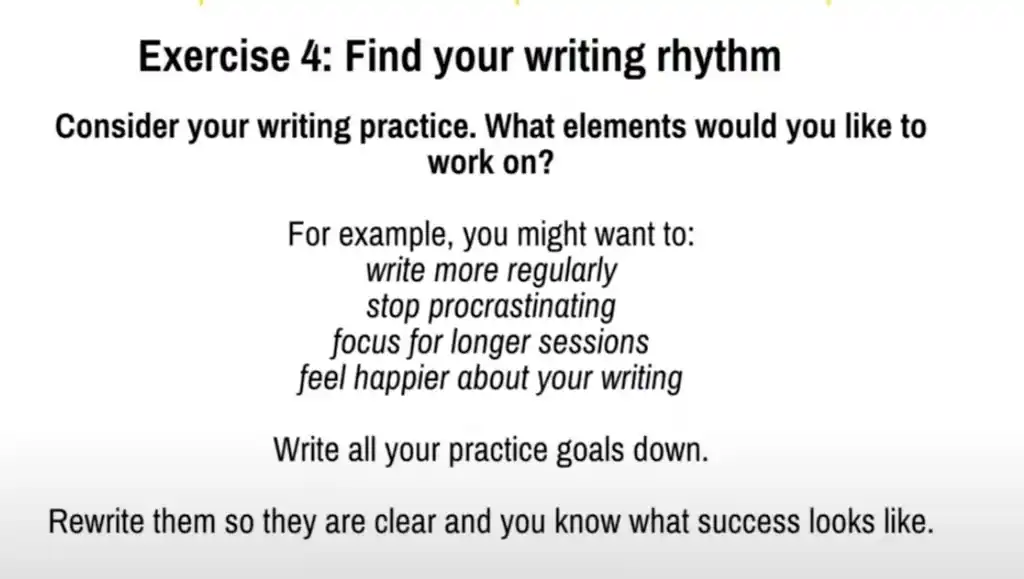
When you consider your practice and your process, what elements would you like to improve? For example, do you want to write more regularly? Is there something about your environment that you would like to improve? Are there distractions and procrastination tendencies or do you want to work for longer? For now, write down as many as you can, perhaps by using the brainstorming technique.
Building your Writing Habit
BEC: A method for discovering our strengths with productivity is by tracking your actions and feelings. For instance, is there an ideal time of day for you to start writing?
John McPhee is a prolific journalist and nonfiction writer who has won the Pulitzer Prize and is a professor of writing and journalism at Princeton. He says this:
“The routine produces… If somebody says to me, 'You're a prolific writer' — it seems so odd. It's like the difference between geological time and human time. On a certain scale. It does look like I do a lot, but that's my day, all day long, sitting there wondering when I'm going to be able to get started.
“And the routine of doing this six days a week puts a little drop in a bucket each day. And that's the key. Because you put a drop in a bucket every day and after three hundred and sixty-five days, the bucket is going to have some water in it.”
This is the key to creating habits; it's all about repetition. The habit loop is what happens inside our brains which makes a habit become embedded. Indeed, 42% of our daily activities are habitual. Imagine sitting down and getting straight to writing effortlessly!
Exercise 5: The habit loop
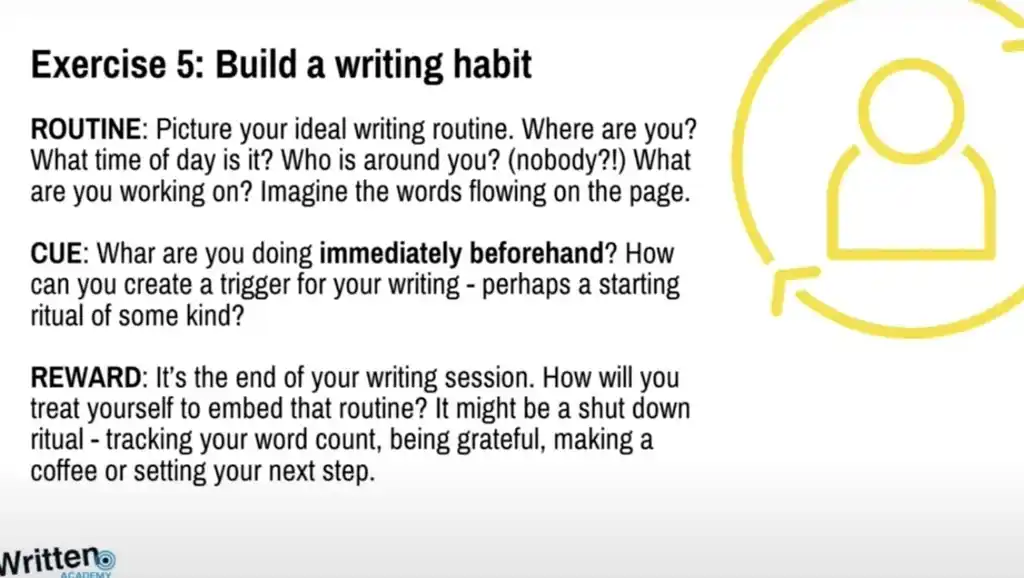
You should start thinking about your ideal writing routine.
- Where are you?
- What time of day is it?
- Is anybody around you?
- What are you working on?
This can be an idealized version, and you can work out what is realistic afterwards. It may be helpful to simply picture your next writing session.
- Where are you going to be?
- Have you got it booked in your diary?
- What time is it?
Next, think about your writing ritual. You could start by free writing, lighting a candle, or listening to music.
The final part of the habit loop is the reward, and you are more likely to do things that make you feel good. For example, you could treat yourself to a fancy coffee, a biscuit, or just setting your next step.
One method to getting started is to initially do something small and easy. Ideally, this should be as quick and as fun to do as the thing you do to procrastinate. Thinking small is helpful to build a habit but also when thinking about your writing goals and your initial writing steps.
CHRIS: It can be great to be ambitious, but it's far better to actually get some writing done to start with. By starting off small, you can always increase the amount later on.
BEC: Indeed, you might be a person who is motivated by big goals, and that's great. You might love to take part in NaNoWriMo. Equally, you might be the sort of person who gets overwhelmed by big goals. There's no single way to set goals in the same way that there's no one way to set a resolution. Nevertheless, for many people who want to get results, often starting small is an excellent tactic.
Sign up for Bec and Chris's substack over at Written Academy.



